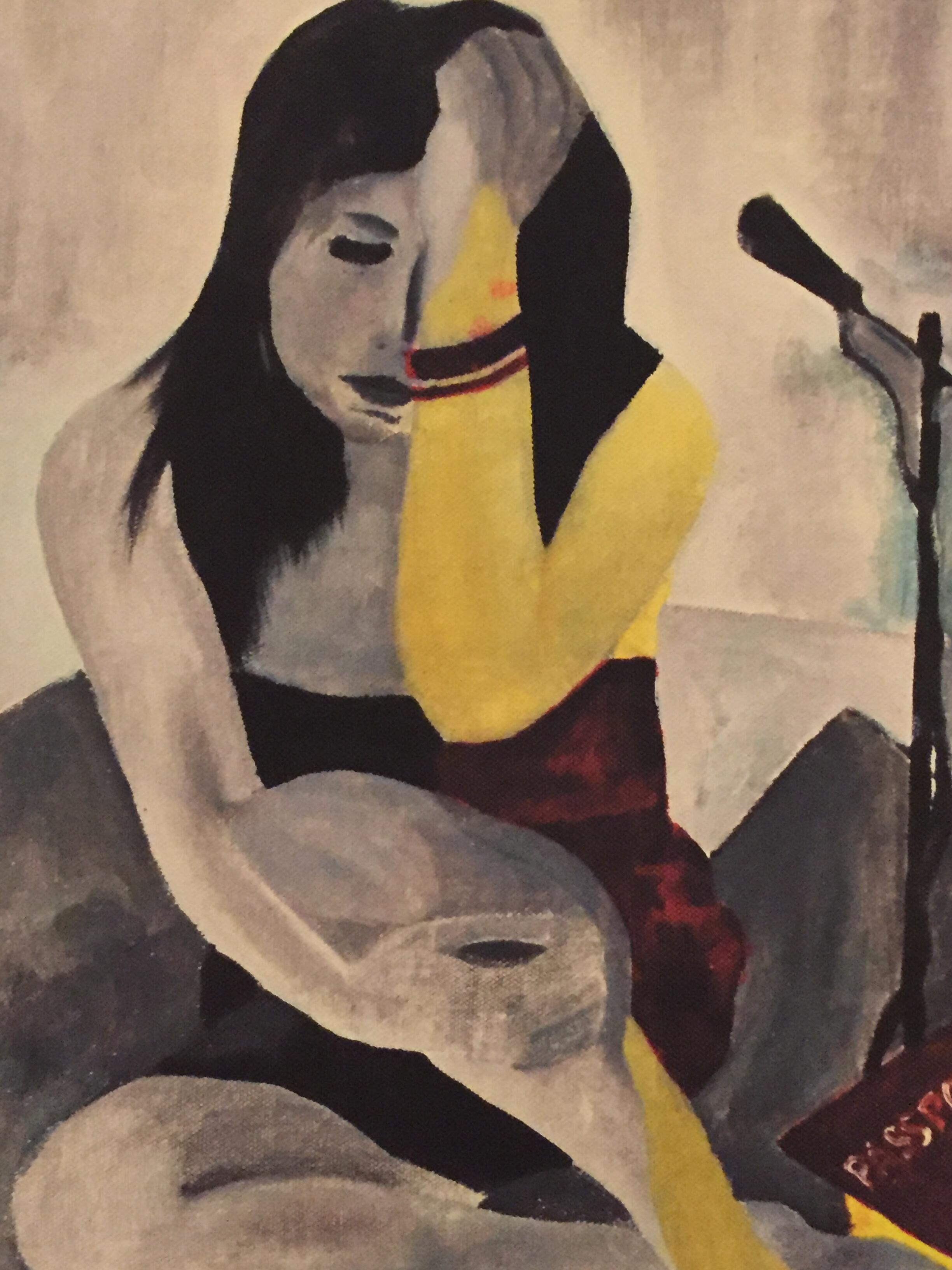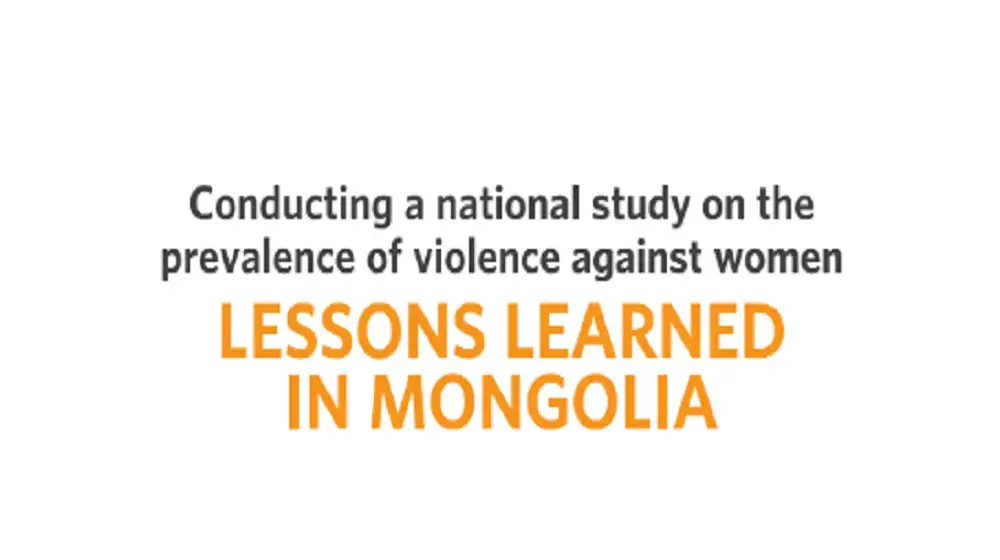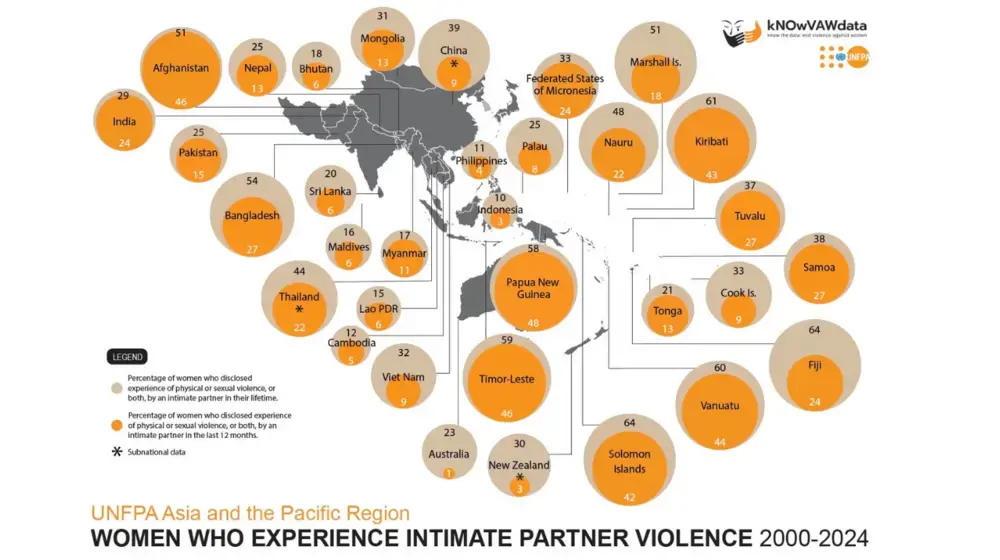By Björn Andersson, Karin Hulshof and Mohammad Naciri
Earlier this year, as containment measures were imposed across Asia-Pacific in response to COVID-19, a shadow pandemic spread – domestic violence against women and children.
Women and children found themselves trapped in situations of harm, confined in the same space as their abusers, isolated from peer support and cut off from services. Just as needs grew, services, including shelters, faced severe disruption.
The crisis exposed the significant and persistent gaps in prevention and response services regionwide. As the socio-economic devastation of the pandemic worsens, unaddressed, these gaps will only further exacerbate the vulnerable situation of millions of children and women.
There is a growing recognition that action on violence against children (VAC) and violence against women (VAW) has to be taken together – and urgently.
The impact of violence against women and children can be far reaching and severe
VAC and VAW have long been among the most widespread human rights abuses globally. One third of women worldwide - nearly 1 billion - will experience some form of violence during their lifetime and one billion children suffer some form of violence every year [i].
The consequences of VAW[ii] and VAC[iii] are far-reaching and severe. Violence can cause health and social harm, with enormous cost to individual victims/survivors – placing a considerable burden on health, justice and social welfare systems – and to their families, communities and national economies. Failing to effectively tackle it will constrain national development and prevent the attainment of the Sustainable Development Goals, already jeopardised by the impacts of COVID-19.
Violence against women and children are linked
These harms share risk factors, including a lack of responsive institutions and weak legal actions against violence. As well, they share social norms that condone violent discipline, promote toxic masculinity, prioritize family reputation and blame victims – all of which perpetuate gender inequality.
Intimate partner violence (IPV) and VAC often co-occur in the home[iv]. Evidence indicates that children in households affected by IPV are more likely than other children to experience violent discipline by both male and female caregivers[v]. Further, witnessing IPV is in itself a form of emotional violence, with long-term health and social consequences similar to the impact of direct abuse[vi].
Adolescent girls are at heightened risk
Girls, especially adolescents, are at risk of violence against children and women. They can directly experience IPV from husbands and romantic partners. IPV is significantly correlated with lower age of first union and unintended pregnancy[vii]. Despite their heightened risk, adolescent girls often fall through the gaps of prevention and response programming on VAC and VAW.
Violence against children and women has an intergenerational impact
Adults who experienced physical, sexual and emotional abuse as children are far more likely to be involved in interpersonal violence - women are 16 times more likely to be a survivor of IPV and men are 14 times more likely to be a perpetrator[x].
Girls and boys who were exposed to IPV are also more likely to use harsh parenting against their own children who in turn are at risk of carrying on the pattern, thus perpetuating the intergenerational cycle of violence against women and children.
Breaking the cycle – together
Knowledge of shared risk factors and social norms, emerging evidence of the effectiveness of coordinated approaches for prevention, and common pathways for response help pave the way for effective action between sectors working on VAW and VAC.
Today, the Regional Offices of UNFPA, UN Women and UNICEF are launching a joint study exploring and clearly illustrating the interlinkages between VAW and VAC in four countries - Cambodia, Papua New Guinea, the Philippines and Viet Nam.
Building on this, we are committing to strengthen ongoing collaboration to tackle violence against women and children. We are also calling on all actors working to end these violations to join hands for prevention, response and evidence generation. With insufficient resources available to tackle violence, working together is not an option – it is an imperative.
Let us urgently and collectively shine a spotlight so that violence does not stay in the shadows. Together, we can make the world a better place for millions of children and women.
-Ends-
Björn Andersson is the Regional Director UNFPA for Asia and the Pacific
Karin Hulshof is Regional Director of UNICEF East Asia and Pacific
Mohammad Naciri is Regional Director of UN Women for Asia and the Pacific
For any enquiries related to this statement, please contact:
- Michael Drach, UN Women Regional Office for Asia and the Pacific, michael.drach@unwomen.org
- Shima Islam, UNICEF Regional Office for East Asia and Pacific, ssislam@unicef.org
- Roy Wadia, UNFPA for Asia and the Pacific, wadia@unfpa.org
[i] WHO. Violence against women: Global picture – health response, http://www.who.int/reproductivehealth/publications/violence/VAW_infographic.pdf?ua=1 ; Global Status Report on Violence Against Children, WHO 2020
[ii] Global and regional estimates of violence against women: prevalence and health effects of intimate partner violence and non-partner sexual violence, World Health Organization Geneva, 2013.
[iii] Supra i WHO 2020
[iv] Guedes A, Bott S, Garcia-Moreno C, Colombini M. Bridging the gaps: A global review of intersections of violence against women and violence against children. Global Health Action. 2016;9(31516).
[v] UNFPA and UNICEF, Making the Connection, 2018
[vi] Supra i WHO 2020
[vii] WHO and PAHO, Understanding and addressing violence against women, 2012; Bott S, Guedes A, Goodwin M, Mendoza J. Violence against women in Latin America and the Caribbean: a comparative analysis of population-based data from 12 countries [Internet]. Washington (DC): PAHO; 2012. 156 p. Available from: http://www.paho.org/hq/index.php?option=com_docman&task=doc_download&gid=19825&Itemid=270&lang=en
[viii] World Health Organization, ‘Global and Regional Estimates of Violence against Women: Prevalence and Health Effects of Intimate Partner Violence and Non-Partner Sexual Violence’, WHO, Department of Reproductive Health and Research, London School of Hygiene and Tropical Medicine, South African Medical Research Council
[ix] Kidman, Rachel, ‘Child Marriage and Intimate Partner Violence: A comparative study of 34 countries’, International Journal of Epidemiology, vol. 46, no. 2, 2016, pp 662–675.
[x] Supra i WHO 2020





